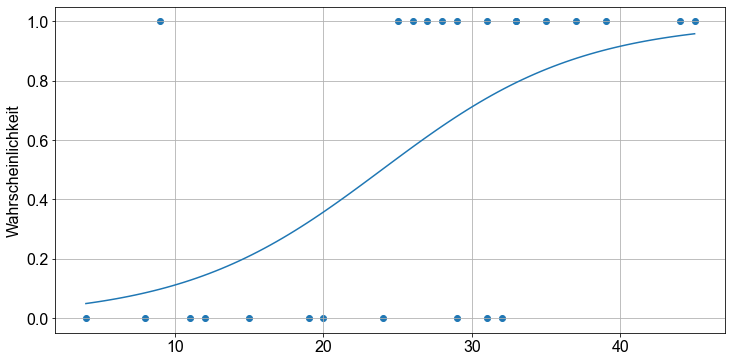Einfaches logistisches Regressionsmodell
Contents
Einfaches logistisches Regressionsmodell¶
Erstellen Sie ein einfaches logistische Regressionsmodell für die folgenden Daten in Python und stellen Sie das logistische Modell graphisch dar.
x = [
29,
15,
33,
28,
39,
44,
31,
19,
9,
24,
32,
31,
37,
35,
8,
4,
11,
12,
33,
45,
20,
25,
27,
26,
29,
]
y = [0, 0, 1, 1, 1, 1, 1, 0, 1, 0, 0, 0, 1, 1, 0, 0, 0, 0, 1, 1, 0, 1, 1, 1, 1]
Lösungen¶
import matplotlib.pyplot as plt
import numpy as np
import statsmodels.api as sm
log_model = sm.GLM(y, sm.add_constant(x), family=sm.families.Binomial())
log_results = log_model.fit()
x_axis = np.linspace(min(x), max(x), num=100)
predictions = log_results.get_prediction(exog=sm.add_constant(x_axis)).summary_frame()
fig, ax = plt.subplots()
ax.scatter(x, y)
ax.plot(x_axis, predictions["mean"])
ax.grid()
ax.set_ylabel("Wahrscheinlichkeit")
plt.show()

